A view from below of a 37- to 23-million-year-old fossil turtle.

Age: 38-23 million years
Period: Oligocene
Location: Brule Formation, Sioux County, Nebraska, USA
Investigations have turned up fossils of turtles that are 300 million years old, on average. The one pictured here is about 30 million years old. Such fossils definitely prove that turtles did not change over all these years but maintained their original form: Living creatures did not evolve, but were created by Almighty God.
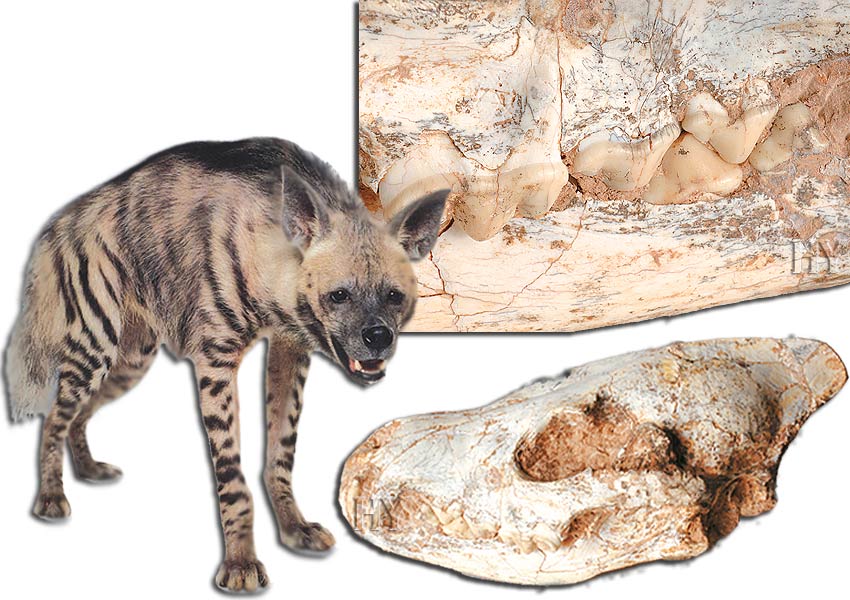
Age: 23-5 million years
Period: Miocene
Location: Gansu Province, China
The fossil record has not produced even one single example of a creature in an intermediate stage of development between reptiles and mammals—which evolutionists claim must have lived in the past. As with other classes of living creatures, the origin of mammals cannot be explained by the theory of evolution. As George Gaylord Simpson admitted many years ago:
This is true of all thirty-two orders of mammals . . . The earliest and most primitive known members of every order [of mammals] already have the basic ordinal characters, and in no case is an approximately continuous sequence from one order to another known. In most cases the break is so sharp and the gap so large that the origin of the order is speculative and much disputed . . . This regular absence of transitional forms is not confined to mammals, but is an almost universal phenomenon, as has long been noted by paleontologists. It is true of almost all classes of animals, both vertebrate and invertebrate. . . . it is true of the classes, and of the major animal phyla, and it is apparently also true of analogous categories of plants. (George Gaylord Simpson, Tempo and Mode in Evolution, New York: Columbia University Press, 1944, pp. 105, 107.)
The fossil pictured here, the skull of a hyena between 23 and 5 million years old, corroborates this admission. This fossil proves that hyenas have always existed as hyenas and refutes the theory of evolution.

Evey fossil that evolutionists have produced to date as proof of evolution has been either fake or irrelevant. Whenever they unearth the fossil of an extinct creature, they announce it with slogans as "a newly discovered horse" or "the missing intermediate form." But when these fossils projected as a proof are subjected to serious investigation, they are immediately found to have no relevance to evolution.
So far, milllions of fossils have been discovered throughout the world, and none indicates that evolution ever occurred on Earth. But these fossils, proving that evolution is unscientific and that Creation is an undeniable fact, are mostly hidden away in musem storerooms and never displayed.
The fact that hyenas living tens of millions of years ago are no different from today's members of the species is evidence for the invalidity of evolution. If the evolutionists' claims were true, hyenas should have turned into much different mammals by this time. But no such thing has happened.

Age: 33 million years
Period: Oligocene
Location: White River Formation, Lusk, Wyoming, USA
As spiders always breed spiders, bees breed bees, and rays are pawned from rays; rabbits have always existed as rabbits. The fossil record shows clearly that rabbits did not evolve from any other creature and have always been as they are now, from the moment they were created. In the light of the countless fossil finds showing the invalidity of evolution, its adherents must accept that Darwinism has been defeated.
The 33-million-year-old rabbit fossil shown here underlines this defeat once more, illustratings the fact that God has created all living things.
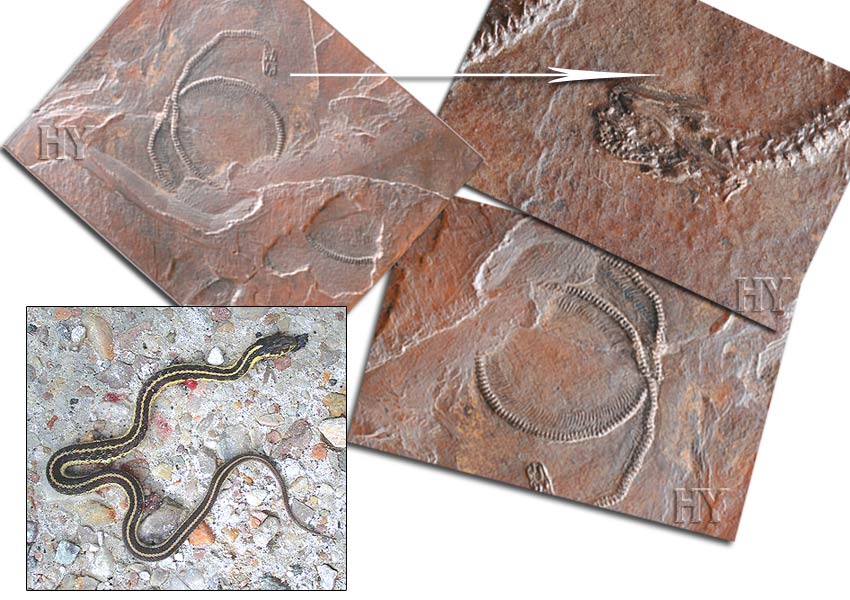
Age: 50 million years
Period: Eocene
Location: Messel Shales, Germany
One thing that evolutionists are at a loss to explain is the origin of reptiles. Between the various classes of reptiles, such as snakes, alligators, turtles and lizards, there are strict boundaries. The fossil record shows that each of these categories has come into existence at once, with very different physical characteristics. One of these proofs to deny that reptiles underwent evolution is the 50-million-year-old snake fossil shown in the picture.
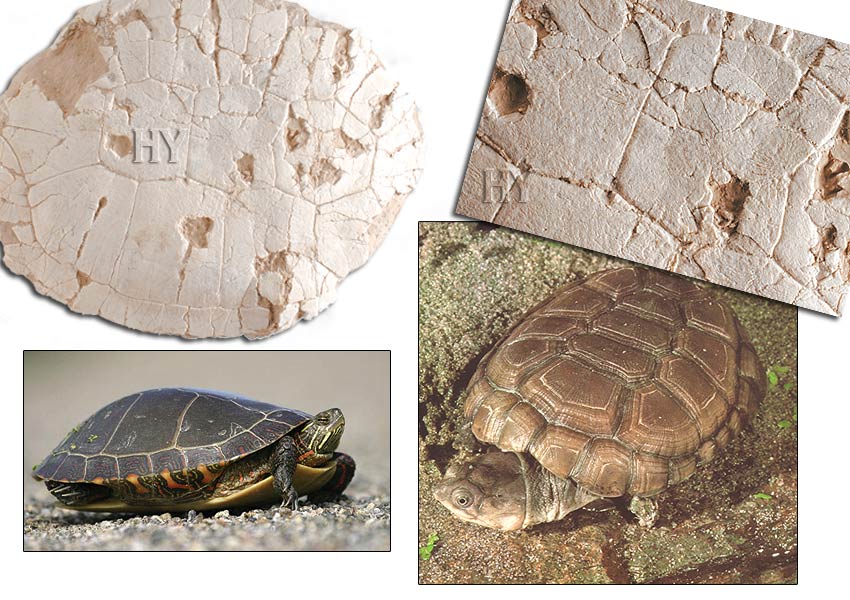
Age: 37-23 million years
Period: Oligocene
Location: Brule Formation, Sioux County, Nebraska, USA Darwinists should be able to explain the development of a turtle's shell. They should be able to show how the structure developed by chance through an imaginary process of evolution, and produce proof of it. But to explain the development of living creatures, Darwinists only resort to stories. They have no proofs to substantiate these stories of evolution. Instead, what Darwinists will always discover are living fossils—for example, the fossil shown here is a 37 to 23-million-year-old fossil of a turtle.

Age: 50 million years
Period: Eocene
Location: Messel Shales, Germany
This frog belongs to the family of Pelopatidae, or mud burrowers. Some members of this family use their back legs to burrow under mud, and others live in an aquatic environment. Darwinists claim that fish are the ancestors of amphibians, but they offer no proof to support this claim. On the contrary, scientific discoveries show that there are such important anatomical differences between the two species that it is impossible for amphibians to have evolved from fish.
One of these scientific discoveries is the fossil record. According to the fossil record, the three basic classes of amphibian all appeared at once. The evolutionist Robert Carroll says, "The earliest fossils of frogs, caecilians, and salamanders all appear in the Early to Middle Jurassic. All show most of the important attributes of their living descendants." (Robert L. Carroll, Patterns and Processes of Vertebrate Evolution, Cambridge: Cambridge University Press, 1997, pp. 292-293.)
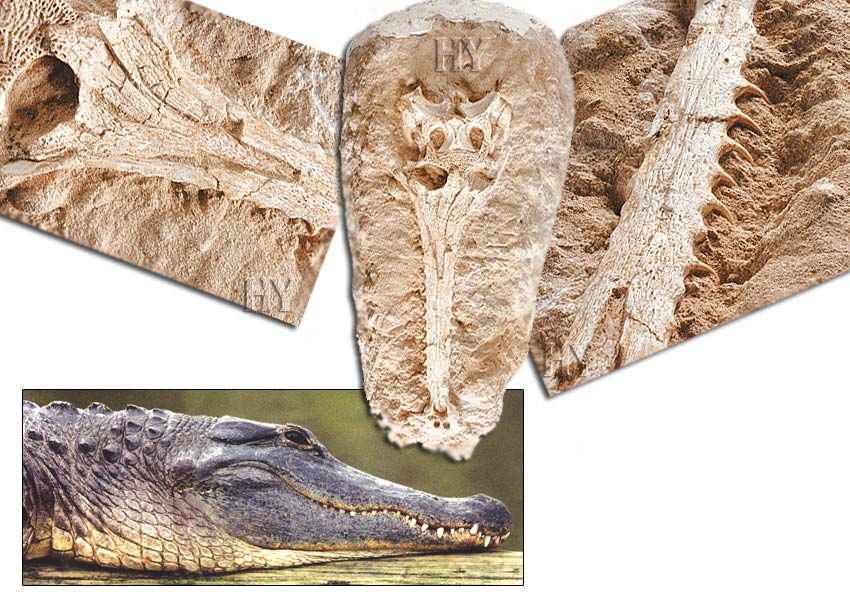
Age: 54-37 million years
Period: Eocene
Location: Phosphate Mines, Khouribga, North Africa
"Crocodile" is the general name given to creatures in the Crocodylidae family. Most live in tropical regions, and their earliest known examples lived about 200 million years ago. There is no difference between crocodiles living today and those that lived about 50 million years ago (like the fossil illustrated here) or even those that lived 200 million years ago. These fossils prove that crocodiles have not changed in hundreds of millions of years. This fact disproves evolution and also demonstrates that God has created all living creaures.
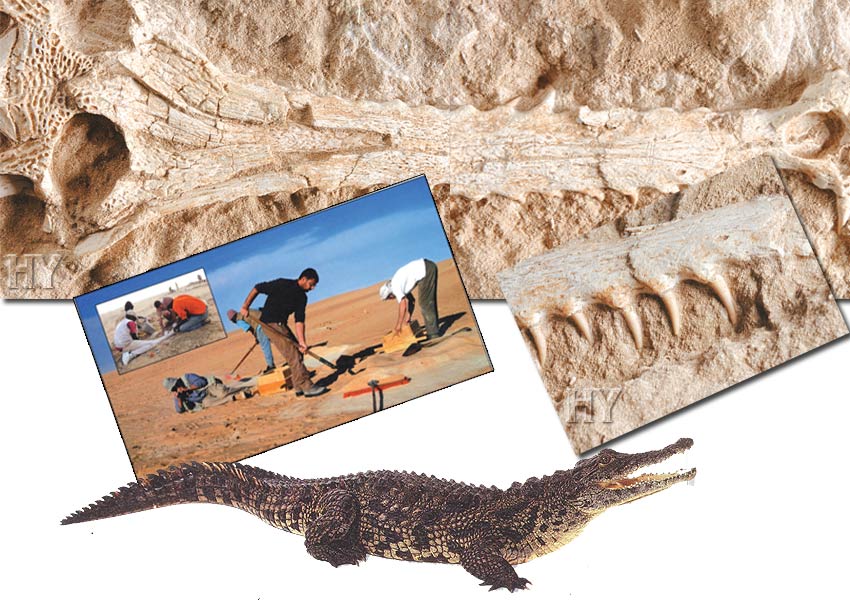
The Djourab desert is one of the many areas of the world where fossils are found. Every one of the many discoveries in this area's 382 fossil fields shows without exception that living species have not changed for as long as they have existed. That is, they have not gone through any process of evolution.
Throughout the Earth's history, crocodiles have always been crocodiles. They have neither come from, nor have changed into, any other species.
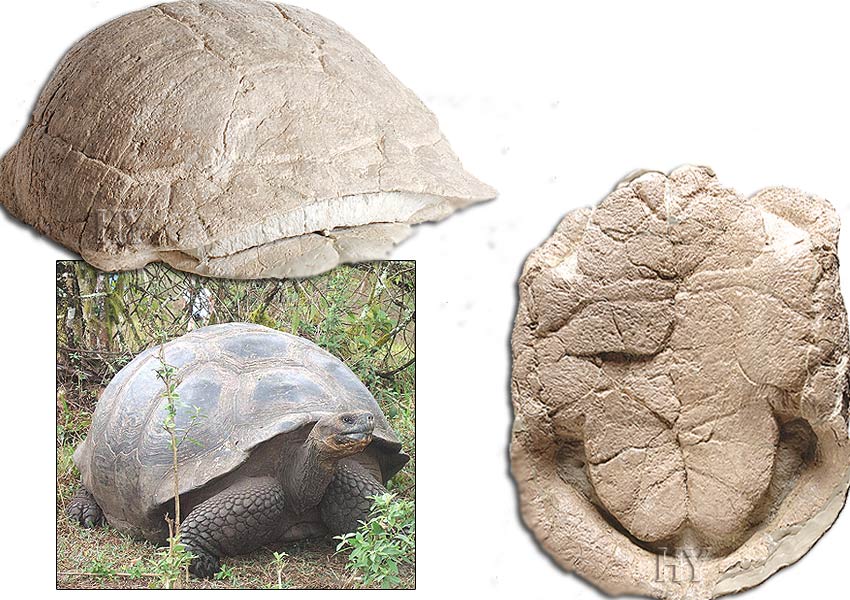
A view from below of a 37- to 23-million-year-old fossil turtle.
Age: 37-23 million years
Period: Oligocene
Location: Brule Formation, Sioux County, Nebraska, USA
Thanks to their excellent bony protection, turtles are well preserved in fossil strata. The oldest turtle fossils are about 200 million years old, and in all that time they have undergone no changes. The 37- to 23-million-year-old turtle fossil seen here shows no difference between turtles that lived then and those alive now, in all their perfect detail.
Faced with these proofs, there's one important fact that evolutionists ought to accept. David B. Kitts, an evolutionist in the department of Geology and Geophysics at Oklahoma University, says that "Evolution requires intermediate forms between species and paleontology does not provide them." (David B. Kitts, "Paleontology and Evolutionary Theory," Evolution, Vol. 28, September 1974, p. 467.)
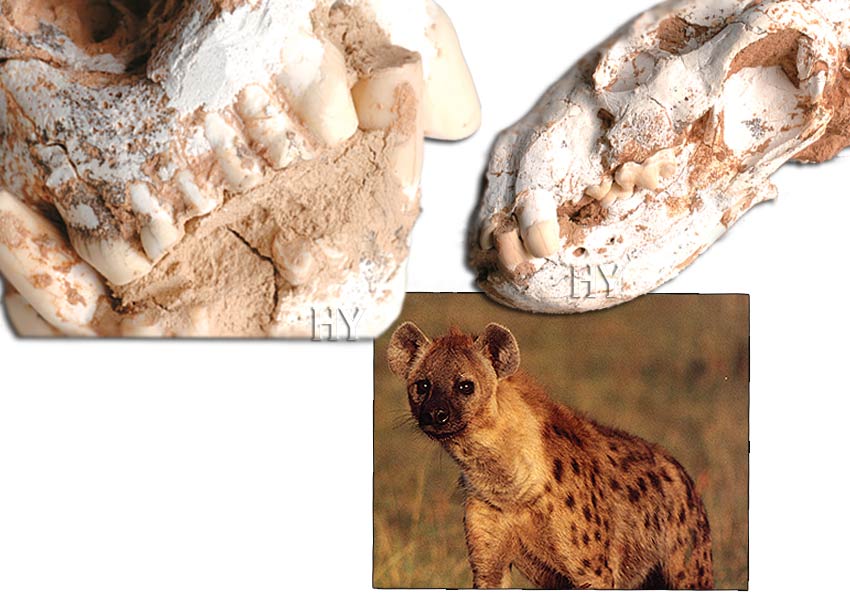
Age: 23-5 million years
Period: Miocene
Location: China
According to the evolutionists' unscientific claims, reptiles are the ancestors of both birds and also mammals. But there are vast differences between these two groups of living things. Mamals are warm-blooded. Tthey produce and regulate their own body temperature, they give birth to and suckle their young, and their bodies are covered with fur. But reptiles are cold-blooded. Tthey do not produce warmth, and their body temperature varies according to the temperature of the ambient air. They reproduce by laying eggs, do not suckle their offspring and their bodies are covered by scales.
How could a reptile have begun to produce body heat, developed a system of sweat glands to control this heat, changed its scales into hairs and begun to produce milk? So far, evolutionists have not been able to give one single convincing scientific answer to such questions.
This shows that the supposition that reptiles evolved into mammals has no scientific foundation. Besides, paleontologists have not found one fossil of any intermediate form that connects reptiles to mammals. For this reason, the evolutionist Roger Lewin had to admit that "The transition to the first mammal . . . is still an enigma." (Roger Lewin, "Bones of Mammals, Ancestors Fleshed Out," Science, Vol. 212, June 26, 1981, p. 1492.)
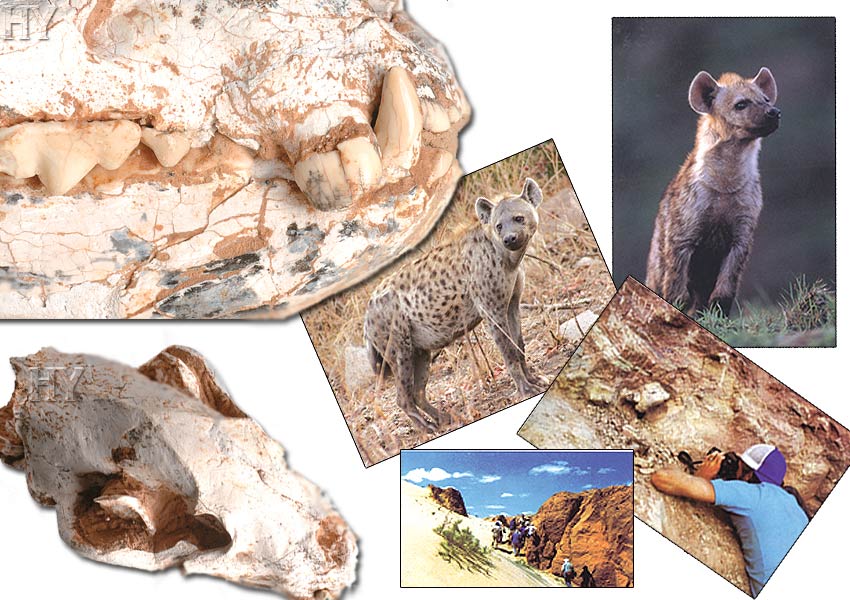
The photograph shows the excavation in the Junggar fossil field in China. Fossils found at this dig show that living creatures have been created perfectly and complete.